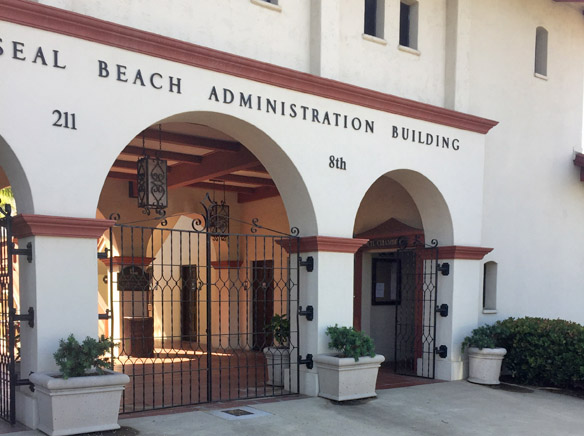The Seal Beach City Council unanimously approved an agreement with Griffin Structures, Inc., to assess the Lifeguard headquarters building. This is basically the first step in a process that could ultimately lead to either a remodel or replacement of the building. The agreement is for $32,500. The adjacent buildings could also be impacted.
“There’s going to be more discussions,’ said City Manager Jill Ingram. “This is only the first phase of many.”
The item was originally on the Consent Calendar, but it was one of two items pulled for separate discussion by District Four Councilwoman Schelly Sustarsic.
“We understand that the City is interested in analyzing the needs for a new Lifeguard Headquarters Building, the Police Safety Building, and the adjacent, detached Lifeguard Garage,” according to the proposal by Griffin Structures, Inc.
The Lifeguard headquarters building is old. According to Public Works Director Steve Myrter, there would come a point when a renovation could trigger state requirements to bring the Lifeguard building up to code. According to Myrter, replacing the building might be more cost effective.
“This study will address operational practices, space usage alternatives, and space needs assessment for the Marine Safety/Lifeguards Department,” said the staff report prepared by Iris Lee, deputy Public Works director/city engineer.
Myrter said “It was hard to repair” the Lifeguard headquarters following a storm of a year or two ago. He said the city had repaired the building with a five-year window.
He said one of the biggest problems is that the structure was built up against the retaining wall.
“Let’s start looking at what could work there,” Myrter said.
Marine Safety (Lifeguard) Chief Joe Bailey said they had put in “Epoxy flooring” as a precaution against flooding.
Bailey said the lifeguards need a new garage.
Myrter said a new building would have to meet ADA requirements.
“It’ll be very challenging to build with the coastal process,” Myrter said.
Sustarsic asked if sea rise would affect the design.
“That is something that will have to be looked at,” Myrter said.
District Three Councilman Michael Varipapa asked if renovation would be part of the study.
According to Myrter, the assessment would try to determine what the Lifeguards need versus what the California Coastal Commission requires.
District One Councilman Joe Kalmick asked if sea rise mitigation would come into play.
Myrter said that was a good question.
Lifeguard Chief Bailey said that when you pull the dry wall in the building and look at what’s there, it’s a “disjointed mess.”
Myrter, apparently referring to either renovation or replacement, said that either way, the city would use the assessment to find out what Chief Bailey needs. He pointed out that the city could discuss it at the next Capital Improvement Program (construction and maintenance) workshop.
The city holds Capital Improvement workshops during the annual budget process.
Ingram said the city did budget for the workshop this year. “As with anything else, priorities change,” Ingram said.
In an email to the City Council, Bridgeport resident Robert Goldberg, had asked why the staff had changed the priority for the project.
Ingram said the city needed to look at the potential need to replace the building.
Bailey said the station was last remodeled when the Jack Haley Safety Building (the police substation) was built.
Lee’s staff report said the “Lifeguard Headquarters Needs Assessment” was in the 2019-20 Capital Improvement Program.
Pages 12, 23 and 32 of the 90-page document, a five-year plan for construction and maintenance, proposed $60,000 for the Lifeguard Headquarters assessment. Page 32 identifies the project as “new” and describes it as a “medium” priority status.
“This project will provide a preliminary assessment of the existing Lifeguard Headquarters and evaluate the feasibility of replacing this structure,” according to the project “description” on page 32 of the 2019-20 Capital Improvement Program.
Under “Justification,” it reads, “The Lifeguard Headquarters was originally built in the 1930’s and modified in the 1960’s and 1970’s. The current building will need to be substantially renovated in the near future to continue to meet the needs of the Lifeguard Department.”




